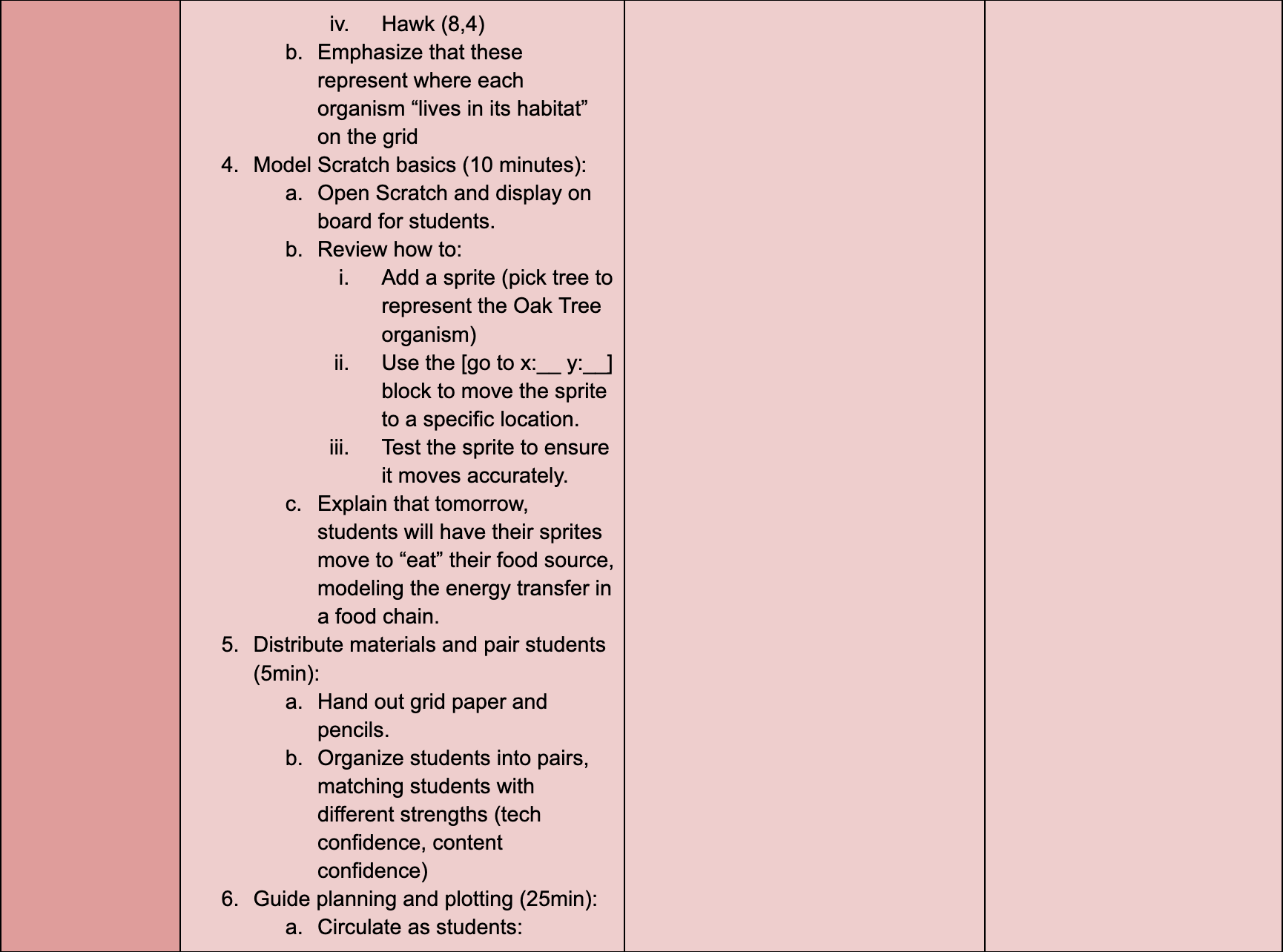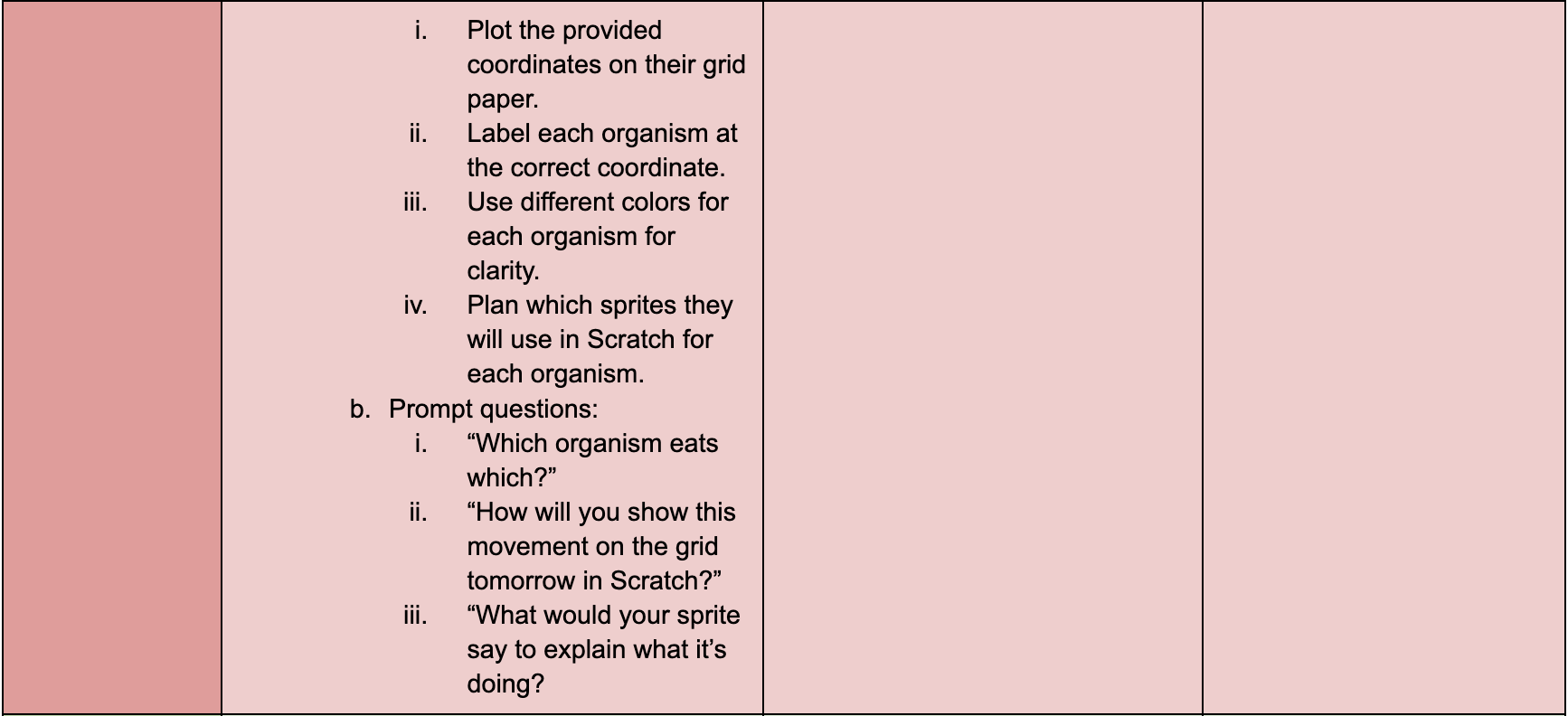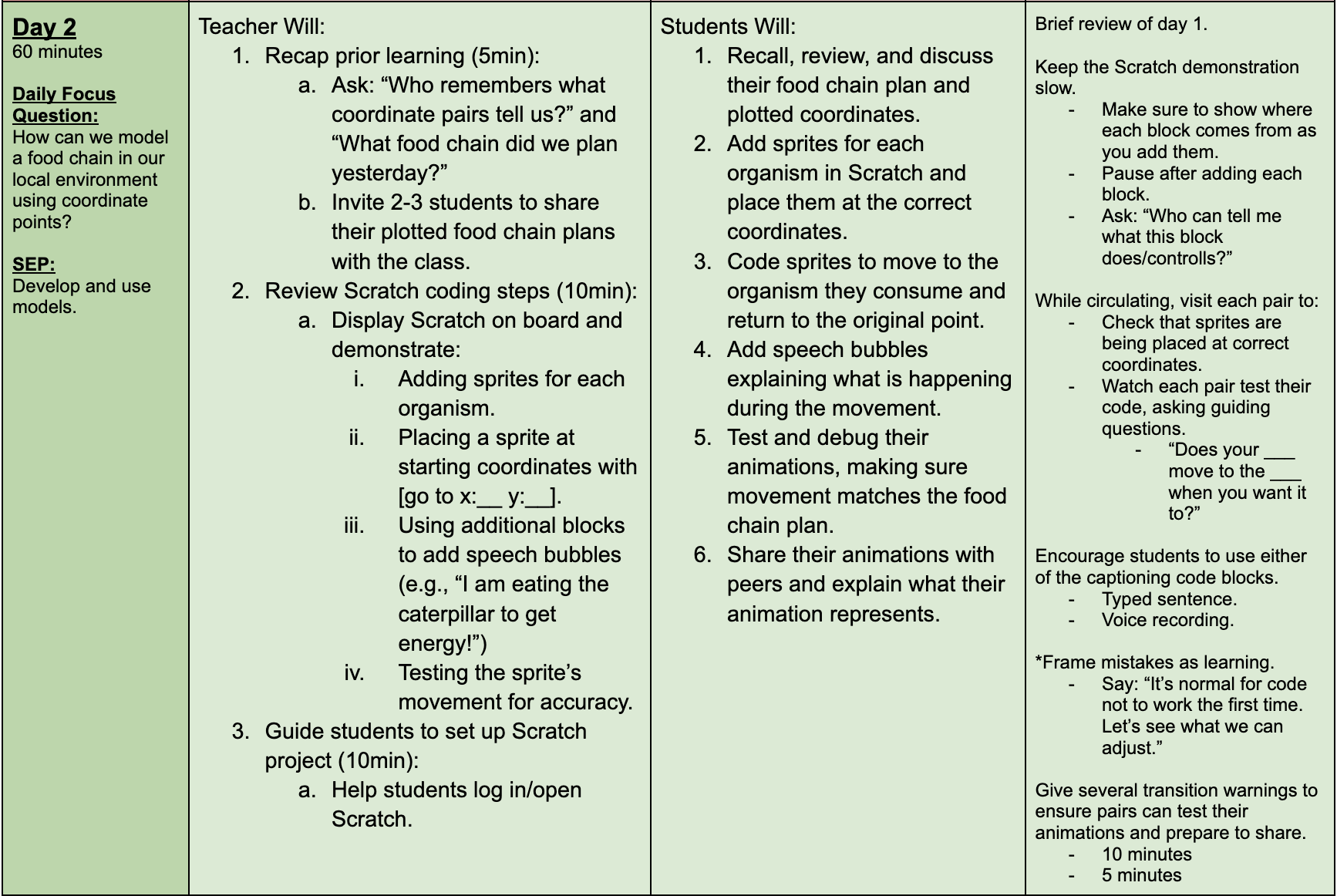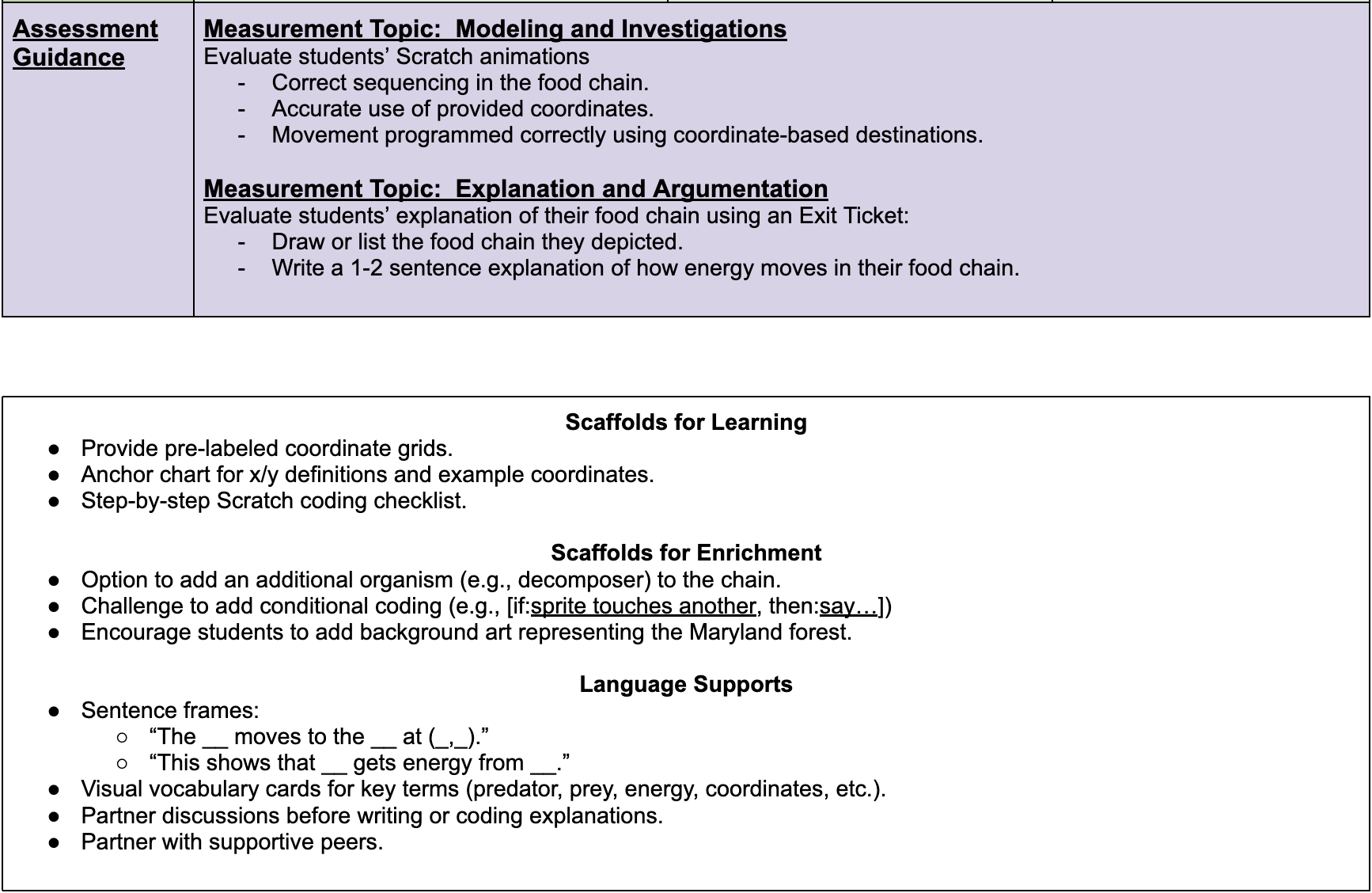
Developing Interdisciplinary Lessons to Support Student Learning
This is my first attempt at fully building an lesson that combines STEM disciplines based on curricula
Seeing the need for more meaningful learning opportunities, I built this lesson in the hopes of reinforcing several critical and computational thinking skills in students who may need real-world connections to feel engaged.
Many students benefit from seeing the use of their learning. This lesson provides examples of where students skills may need different skills or knowledge sets in the future.
Animating Food Chains with Coordinate Points Using Scratch









Reflecting on this Lesson:
I chose to combine plotting coordinate points with modeling local food chain using Scratch animations. This new lesson integrates math, science, and computational thinking while giving students a hands up, creative way to engage with date and content that connects to their local environment.
Strengths:
A major strength of this adapted task is its real world connection. Using a local Maryland forest food chain makes the lesson feel more meaningful while tying into science standards about ecosystems and energy transfer. Students can see how learning about coordinates and data representation can help them understand the environment around them. Another strength is how the lesson leverages technology for student agency and creativity. Scratch allows students to animate their learning, which makes abstract concepts like energy transfer and plotting points more tangible. The lesson also builds in clear opportunities for problem solving, modeling, and computational thinking through debugging their code as they test their animations.
Additionally, the task includes structured collaboration. Students plan and build their Scratch animations in pairs, allowing them to discuss, test, and debug their code while using academic language about coordinates and food chains. The planned teacher moves, such as think aloud, guided questions, and checkpoints between days, help sustain cognitive demand while providing adaptive levels of support for 5th grade students. Finally, the lesson structure includes reflective discussions that allow students to explain their reasoning, which connects directly to measurement topics in Modeling & Investigations and Explanation & Argumentation.
Weaknesses:
While the lesson is strong in many areas, I identified a few weaknesses. First, there is a steep learning curve with Scratch for some students, especially those with less experience with coding or limited typing skills. Some may get stuck on technical challenges rather than focusing on the content, which could lead to frustration. Another weakness is that the lesson require a significant amount of pre-planning, including setting up student Scratch accounts, ensuring devices work, and pre-teaching coding basics. This could be challenging if tech issues arise during the lesson.
Additionally, while plotting coordinates is a 5th grade skill, connecting it meaningfully to a food chain requires students to hold multiple concepts at one, which may be difficult for some learners without intentional scaffolding. Finally, while the task is engaging, students could get distracted by design elements in Scratch, focusing more on sprite appearance than the modeling required by the task.
Supportive Measures:
To address these weaknesses, I plan to pre-teach Scratch basics separately before the lesson with opportunities for students to explore the platform on their own, ensuring students know how to add sprites, use [go to x:__ y:__] blocks, and test code. I will create a Scratch coding checklist for students to follow, focusing them on the purpose of the task. To reduce cognitive overload, I will provide graphic sheets with pre-assigned coordinates to support visual learners and English Multilingual Learners, and I will use visuals and anchor charts to reinforce vocabulary.
I will also incorporate intentional technology helpers by pairing students with varying levels of Scratch comfort to encourage peer teaching and support. To keep students focused on modeling, I will frame the task with the essential question: “How can we show energy moving in a food chain using coordinates and animations?” and refer back to this question during checkpoints.
Final Thoughts:
These changes will improve access to and engagement in problem solving and innovation in my classroom. Pre-teaching Scratch skills will reduce frustration, allowing students to focus on the content. Checklists and peer support will keep students engaged and organized, while the essential question will sustain cognitive demand by reminding students of the learning gold. Visual scaffolds and intentional pairing will increase access for all learners, including EMLs and students who benefit from structured support. Overall these changes will help to ensure the lesson remains engaging, interdisciplinary, and purposeful while building students’ capacity to model, problem solve, and this critically about real world challenges.